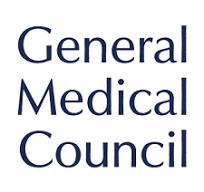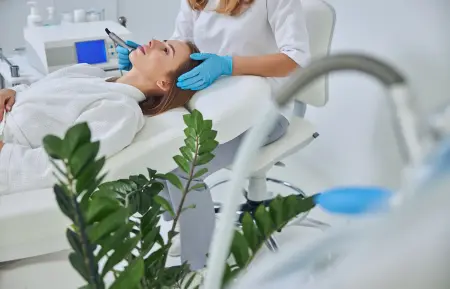🛡️ 100% Satisfaction Guarantee
If you're not completely satisfied with your treatment results within 30 days, we'll provide a refund or free re-treatment. Your satisfaction is our priority.
Licensed & Insured • Risk-Free Treatment
Nathalie Emmanuel
Actress - Game of Thrones Star
Had a wonderful experience with Dr Ken and his staff with my forehead lipoma removal. Thorough in planning before the procedure and so far, l've had a great experience with aftercare. When I had any questions there was always someone available to answer them.

You spoke. We acted.
- You wanted transparent pricing No hidden fees
- You needed a simpler booking process 2‑click scheduling below
94% of patients say they would refer us to friends or family!
*79 out of 84 patients since adaptation.
Transparent Pricing - No Hidden Fees, No Surprises
- Comprehensive consultation
- Removal of your mole
- Complimentary follow-up visit
🛡️ 100% Satisfaction Guarantee
If you're not completely satisfied with your treatment results within 30 days, we'll provide a refund or free re-treatment. What do you have to lose?
💡 Service Information
- Additional Mole removal: £150 each
Supplements
- Face or genital area: £145
- Stitches (if needed): £195
Revitalise London vs Other Clinics
| Revitalise London | Other Clinics |
|---|---|
| No hidden fees and no surprises | "From £X..." pricing with hidden fees and surprise add-ons |
|
Book in 2 clicks
Simple, streamlined process |
Lengthy enquiry forms, emails back-and-forth just to book |
| GMC-registered doctors & dermatologists only | Varying clinician levels—often nurse-led or junior staff |
| Built on 18 months of real patient feedback | Legacy clinic models that haven't evolved with patients |
| Same-day treatment available with immediate results | Multiple appointments required, lengthy treatment plans |
Our Medical Team
Meet the experienced professionals who will provide your care
Our Accreditations
Trusted by healthcare regulators and professional bodies for maintaining the highest standards of medical care and patient safety.



🛡️ Regulated & Certified Healthcare
All treatments are performed by GMC registered doctors in our CQC regulated clinic, ensuring the highest standards of safety and care.
🔍 Why Choose Us for Mole Removal?
For your peace of mind, all mole assessments and removals are performed by expert doctors.
Safety, Expertise, and Aesthetic Results
When it comes to mole removal, safety and expertise are paramount. Our GMC-registered doctors provide thorough assessments and utilise advanced techniques to ensure the best possible medical and cosmetic outcome.
Doctor-Led Examinations
Every mole is assessed by a doctor, not a nurse or therapist, to ensure an accurate diagnosis.
Optional Histology
For complete peace of mind, any removed mole can be sent to a lab for analysis.
Scar-Minimising Techniques
We use methods like shave excision and laser to minimise scarring and deliver a superior aesthetic result.
CQC Regulated Clinic
Your procedure is performed in a clinical environment that meets the highest safety standards.

When to Get a Mole Checked: The ABCDEs
Regularly checking your moles is crucial. See a doctor if you notice any of these changes:
Your Mole Removal Journey with Us
Our process is focused on your safety, comfort, and providing clear results.
A GMC-registered doctor will take your history and examine the mole(s) using a dermatoscope, a special magnifying tool that helps identify suspicious features. They will discuss the findings and recommend the best course of action.
If you proceed, the area is numbed with a local anaesthetic. The doctor then performs the removal using the most appropriate technique (e.g., shave excision, full excision). The procedure is quick and comfortable.
We strongly recommend sending all removed pigmented lesions for histology (lab analysis) to confirm they are benign. You'll receive clear aftercare instructions, and a follow-up will be arranged to discuss the lab results.
Book Appointment
Book your appointment in 4 simple steps
📋 Quick Contact Details
🎯 Secure your spot! Only 2 minutes to complete
🩺 Your Treatment Plan
💳 Only £95 Required to Confirm Booking
Remainder payable before treatment at clinic
➕ Optional Add-On Treatments
First Mole Removal
First Mole Removal
Additional Mole Removal
Additional Mole Removal
💡 Key Payment Information
- Only £95 needed to confirm booking
- Consultation mandatory for all new patients
- Treatment cost (optional add-on treatments) paid before treatment at clinic
📅 Select Appointment
Available Times
Please select an available date above.
✅ Selected Appointment
Dr. Mitchell will conduct your consultation and treatment
📋 Review Your Booking
By completing this purchase, you agree to our Terms of Service and Privacy Policy. Treatment subject to medical consultation and suitability assessment.
Have Questions or Prefer to Talk?
Our friendly coordinators are here to help.
Medical Compliance & Privacy
GDPR Compliant: Your personal health information is protected under strict data protection laws. We never share your medical data without explicit consent.
Medical Standards: All treatments are performed by licensed medical professionals following NHS and GMC guidelines.
E-A-T Compliance: Our content is reviewed by qualified medical professionals and updated regularly to reflect current medical best practices.
Frequently Asked Questions About Mole Removal
No, the procedure itself is not painful. The area is completely numbed using a small local anaesthetic injection before the removal begins. You may feel the tiny scratch of the injection, but after that, the removal is pain-free.
Our doctors are highly skilled in techniques designed to minimise scarring. For most removals (like shave excisions), the resulting mark is usually a small, flat, pinkish or pale spot that fades significantly over time and is often barely visible. Any procedure that breaks the skin has the potential to scar, but we prioritise the best possible aesthetic outcome.
Yes. Our appointments are structured to allow for both the consultation and the removal procedure to be completed in a single visit, providing a convenient 'see and treat' service.
Histology is the process of sending the removed mole tissue to a laboratory to be examined under a microscope by a pathologist. This is the only way to be 100% certain that the mole is benign (non-cancerous). We recommend this for all removed moles as a gold-standard safety precaution.
Our pricing is transparent. It starts from £297, which includes the consultation with the doctor and the removal of up to 3 moles in the same visit. The cost for histology is separate. All costs will be confirmed with you before any procedure is undertaken.
Additional Information
mole removal in London
? Our expert dermatology team atHarley Street mole clinic
offers discreet, effective treatments for all skin types.How Much is Mole Removal?
Many patients ask, “
How much is mole removal
?” Our pricing is transparent. Theprivate mole removal cost UK
varies depending on size and location of the mole. You can request a fullprivate mole removal cost
breakdown before starting treatment.Mole Checks & Diagnosis
We provide:
-
Skin check for moles
-
Mole checks London
-
Mole checks near me
-
Full body mole check London
-
Get your moles checked
for peace of mind
Our experienced dermatologists at
the mole clinic
use advanced screening to detect any concerns early.Walk-In & Same-Day Appointments
Our
walk in mole removal
service means you can be seen quickly. Whether you’re searching formole removal near me
or need urgent treatment, we can help.Mole Removal Treatments
We offer a range of procedures, including:
-
Laser moles removal
-
Non surgical mole removal
-
Surgical excision molex
-
Flat mole removal
-
Mole removal Harley Street
for premium care
We also treat related concerns such as
milia removal London, birthmark removal London,
andmole treatment London.
Affordable & Transparent Pricing
Our
mole removal London price
is competitive, withcheap mole removal London
options available for smaller cosmetic procedures. You’ll always know yourmole removal price
before starting.Why Choose Us?
- Trusted
mole removal clinic
in central London - Highly experienced
Harley Street mole clinic
doctors - Specialists in
private mole removal
- Proven results for
how to get rid of moles
safely - Advice on
how to remove mole
andhow to remove a mole
without risks


